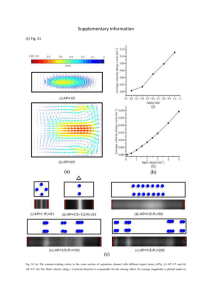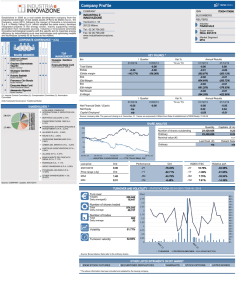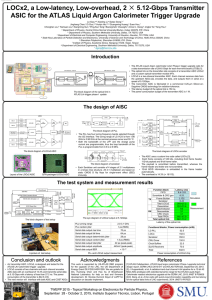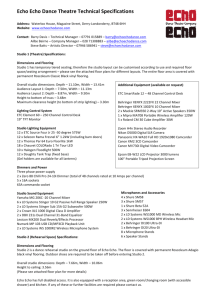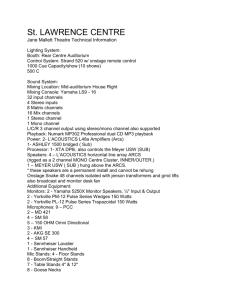SPD3
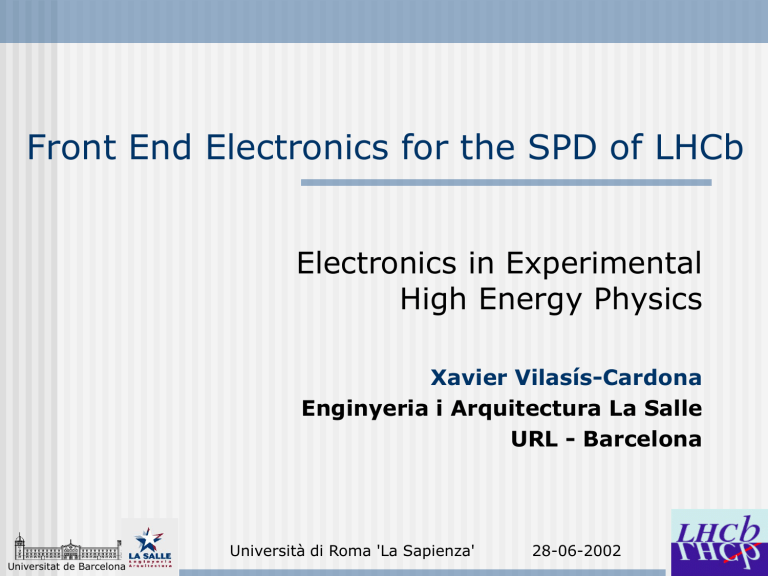
Front End Electronics for the SPD of LHCb
Electronics in Experimental
High Energy Physics
Xavier Vilasís-Cardona
Enginyeria i Arquitectura La Salle
URL - Barcelona
Università di Roma 'La Sapienza' 28-06-2002
Universitat de Barcelona
The collaboration in Barcelona
Universitat de
Barcelona
Lluis Garrido
Ricardo Graciani
David Gascón
Ernest Aguiló
Miriam Calvo
Sergio Gómez
Sebastià Bota
Atilà Herms
Angel Diéguez
Xavier Cano
Enginyeria i
Arquitectura La Salle
Rafael Ballabriga
Sonia Luengo
Mar Roselló
Jordi Riera
Xvc
Outlook
What is LHC ?
What is LHCb ?
The SPD
Photomultipliers
Very Front End Electronics
The ASIC
Front End Electronics
LHC : the future collider at CERN
Proton-Proton
Starting 2007
Find the Higgs
Find new physics
4 detectors
Alice
Atlas
CMS
LHCb
LHC : some data
Energy at collision: 7 TeV (1700 TeV for ions)
Dipole field at 7 TeV: 8.3 T
Bunch spacing: 7.5 m
Bunch separation: 24.95 ns
Particles per bunch: 10^11
Current: 0.56 A
Luminosity: 10^34 cm^2 s
Energy per beam up to 0.35 GJ
Stored magnetic energy up to 1.29 GJ per sector
TOTAL STORED ENERGY = 11 GJ
LHCb
A single-arm spectrometer covering
min ~15 mrad
(beam pipe and radiation)
max ~300 mrad
(cost optimisation)
Precise measurements of
CP violation
B mesons
CKM matrix elements
LHCb : what is CP violation ?
CPT is an exact symmetry
• C charge conjugation
• P parity
• T time reversal
CP is almost exact
CP violation explains matter-antimatter asymmetry
LHCb : the trigger
LHCb = 1000k channels : too much data
The multi-level trigger chain
Input rate Latency
Level 0
Level 1
Level 2
Level 3
40 MHz
1 MHz
40 kHz
5 kHz
3.2 μs
256 μs
10 ms
200 ms
Logging rate 200 Hz (20 MB/s) 200 TB/year
All LHC experiments: 5-8 PB/year
B/s
1 TB/s
4 GB/s
SPD
Scintillator Pad Detector
In front of the calorimeter
Discriminates photons from electrons at level
0 of trigger
spd ps e spd ps ecal ecal
SPD structure
6000 Scintillator Pads
Helicoidal WLS optic fibers
64 channel PMT (Hamamatsu)
1 bit per channel at 40 MHz
Synchronisation issues
Send bit to
PreShower
Compare to a variable threshold
Radiation hard
SPD signal shape
Few photoelectrons
Irregular signal shape
Extended over 25 ns
Non-uniform PMT gain
SPD electronics design
ASIC : why an ASIC ?
6000 channels : minimal area /ch
Processing speed 40 MHz
Power consumption < 2 W / 64 channels
Analog Processing + Digital Control
Signal range. 0 to 5 MIP (0 to 650 mV)
Electronics resolution 5% of 1 MIP
Dynamic range: 40 dB (7 bits)
ASIC Structure
Bunch crossing clock (40 MHz)
Clock frequency division by 2
Clock delay
(about 2 ns)
Single to differential Integrator
Track & Hold
Pile-up subtract Comparator
+
Digital multiplexer
PMT chan. 1
- 17 %
+
ECL internal CLock
(20 MHz)
Channel clocks generation
(CMOS & ECL)
A
D
PMT chan. 2
+
- 17 %
- 17 %
+
A
D
PMT chan. n
Vref (or DAC range) m bits
Serial interface for threshold programing
Digital differential link to PS FE n/2 links
SPD VFE control unit
ASIC characteristics
Programmable
Thresholds per sub-channel
Subtraction: from 0% up to 40% of the signal
T0: done externally with a delay unit (LAL design)
0.8 m AMS BiCMOS Technology
Dual channel
Fully differential
Working at 3.3V
SEU and SEL protection
Triple voting
Guard rings
Review of ASIC runs
RUN1 (Sep 2000)
Test separate blocs
1 full channel
RUN2 (Jun 2001)
4 full channels
ECL vs CMOS output
RUN3 (Jan 2002)
New tunnable substractor
1 full channel with digital control
On-chip DAC to program thresholds
RUN4 (Sep 2002)
1 Complete processing channel
Separate blocs + digital control
Works at 3.3
V to reduce power consumption
Fully differential preamplifier added before the integration stage to meet PMT DC current limit requirements
ASIC : RUN 4 layout
ASIC : integrator
ASIC : Track and Hold
ASIC : substractor
ASIC : latched comparator
ASIC : integrator measurements
10 circuits
Offset ( Output Zero Error ): <OZE> = + 38.6 mV io
Gain: <Vo/Vi> = 16.51 (for a typical input pulse) io
Noise E
E no no
= 70 mV r.m.s.
= 0.091 r.m.s.
(0,55%)
Treset = 5.5 ns (for 1 V output)
< 2 mV r.m.s
(Using scope, C.F. 6)
< 1 mV r.m.s
(Discriminator sweep of thresholds)
B'
1000
800
600
400
Data: Data1_B'
Model: Gauss
Chi^2= 2081.19889
R^2 = 0.98682
y0 51.68159
±23.05052
xc -61.70164
±0.05011
w 1.62784
±0.11995
A 1609.67905
±130.96337
200
0
-66 -64 -62 -60 -58
Threshold [mV]
-56 -54
ASIC : integrator linearity
2500,00
2000,00
1500,00
1000,00
500,00
0,00
-500,00
-1000,00
-1500,00
-2000,00
-2500,00
-4000,00 -3000,00 -2000,00 -1000,00 0,00 1000,00
Input Signal [m V]
2000,00 3000,00
R2B02
R2B04
R2B05
R2B06
R2B07
R2B08
R2B09
R2B01
R2B10
4000,00
ASIC : programmable substractor
Gain of the controlable block of the subtractor = f(Vb) (10 samples)
0,5
0,4
0,3
0,2
0,1
0
3,5
1
0,9
0,8
0,7
0,6
3,7 3,9 4,1 4,3 4,5 4,7
01
02
03
04
05
06
07
08
09
10
01_soldat
4,9
VFE Board description
100 boards
7x12 cm
Multiplexed
LVDS
Very Front End Board
Test beam boards
Sep 2001: RUN 2, 4 full channels/ 4-layer board
•ECL vs CMOS output
•Clock signal distribution
•Power Supply distribution
June 2002: RUN 2, 4 full channels / 4-layer board
•Improvements in board design
•Signals distribution
June 2002: RUN 3, 1 full channel and digital control/ 6-layer board
•Digital signal distribution vs analog signal distribution
•Noise effect vs number of layers
Front End Board
Control Unit :
•Bus Bridge
•Programmable Delays
1 Control Unit every 4 VFE Boards
5 Control Units in a Front End Board
6 Front End Boards
Conclusions
